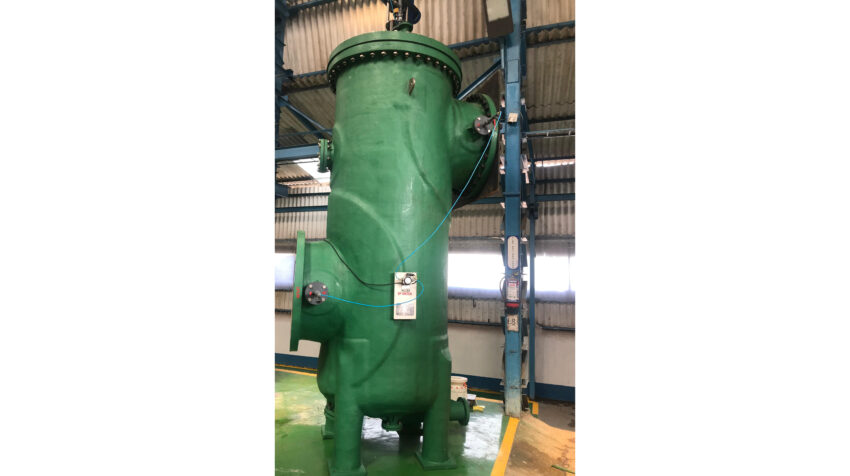Cogeneration power plants require cooling systems to dissipate excess heat, and seawater cooling is a method employed, especially in coastal regions. However, the saline nature of seawater can lead to corrosion of plant equipment like strainers, necessitating the use of corrosion-resistant materials. To prevent corrosion, material selection is crucial and often involves using costly specialized alloys, protective coatings, and increasingly Fiber-Reinforced Plastic (FRP).
“Today, a much more cost-effective option is to utilize Fiber-Reinforced Plastic strainers that are specifically designed to be resistant to corrosive environments at a fraction of the cost of duplex or super duplex stainless steels,” says Robert Presser, Vice President of Acme Engineering Prod., Inc., a North American manufacturer of industrial self-cleaning strainers. The company is an ISO 9001:2015 certified manufacturer of environmental controls and systems with integrated mechanical, electrical, and electronic capabilities.
FRP is a composite material made up of polymer supported with fibers for added strength. FRP is already widely utilized for applications such as the power plant piping used to carry seawater for once-through process cooling.
OEMs are now utilizing FRP in cogeneration plant applications where superior corrosion resistance is required at lower cost. As an example, Acme offers the option of using exceptionally corrosion resistant FRP for external strainer construction, including the pressure vessel itself. The internal mechanism is still manufactured with super duplex or similar steels.
Due to the FRP’s strength, the material can also be used to build to ASME BPVC Section X standards, which establishes requirements for the fabrication of fiber‐reinforced plastic pressure vessels. Acme has already utilized FRP for pressure vessel applications up to 300 PSI.
“Cogeneration plants can save approximately half the cost or more when the strainer’s intake vessels and piping are built with FRP, and only the internals are constructed with super duplex,” says Presser.
To meet industrial requirements, Acme’s FRP division designs and manufactures various types of FRP, simplex, duplex, automatic scraper, and backflush filters. To help ensure compliance with specifications, the OEM provides detailed engineering, including 3-D modeling of FRP piping, piping flexibility/general stress analysis, and piping layout/isometrics. In addition, the OEM provides complete skids with piping, valves, and instrumentation along with PLC control, as needed.
An automatic, self-cleaning, scraper strainer is often used with FRP construction when cost-effective corrosion resistance is necessary and minimal oversight desired. In the case of the OEM’s automatic scraper strainer, a motorized unit is designed to continually remove both very large and very small, suspended solids from seawater, wastewater, and process streams.
Although cogeneration plants have long employed industrial strainers constructed of special stainless steels to resist corrosion, utilizing FRP can be just as effective at a much lower cost. When used with advanced, self-cleaning scraper strainers, downstream equipment and processes can be effectively protected for the long term without premature component replacement or excessive oversight.
For more info, visit Acme Engineering Prod. Inc. at acmeprod.com; In the US, phone Robert Presser, Vice President at: 518-236-5659; In Canada phone: 514-342-5656.

